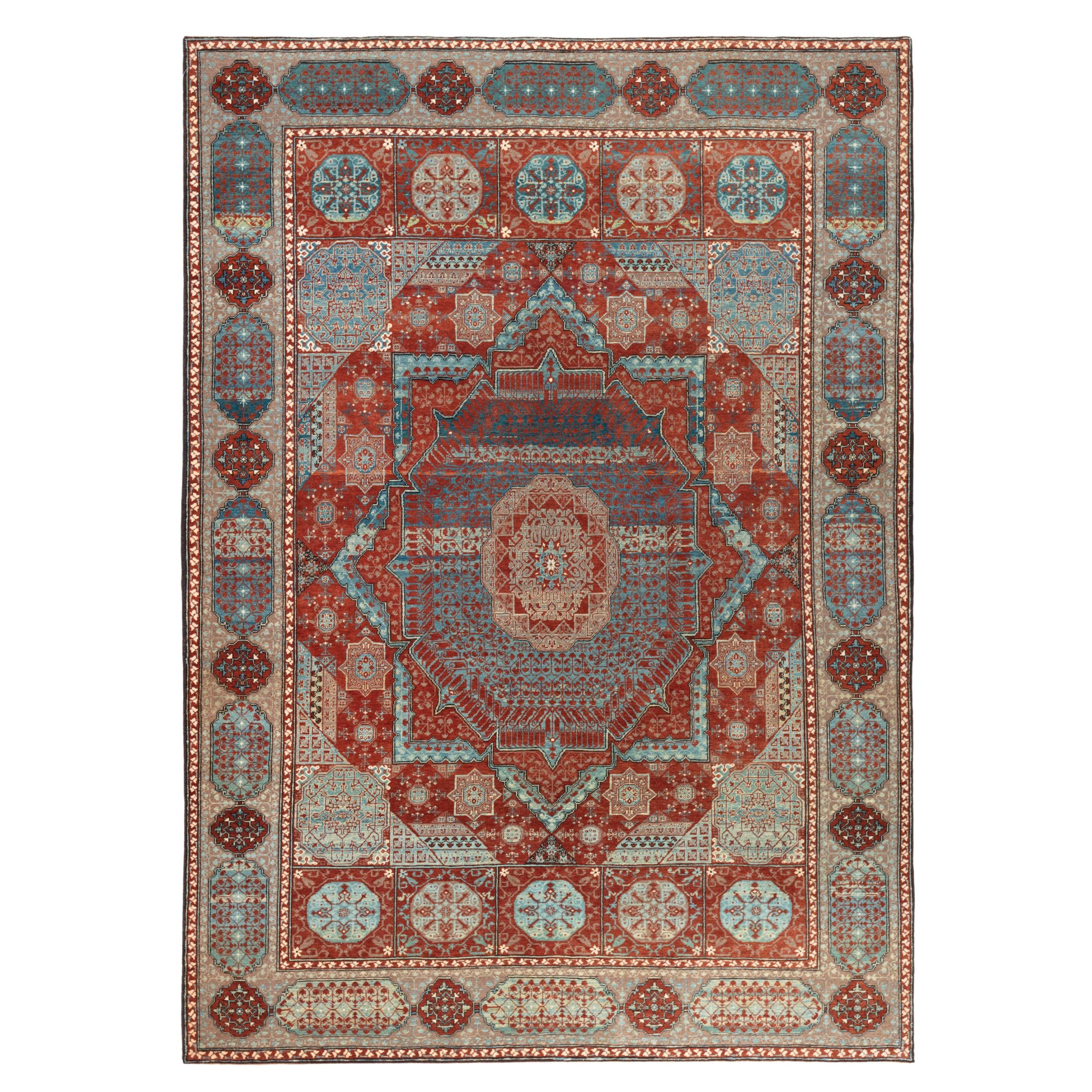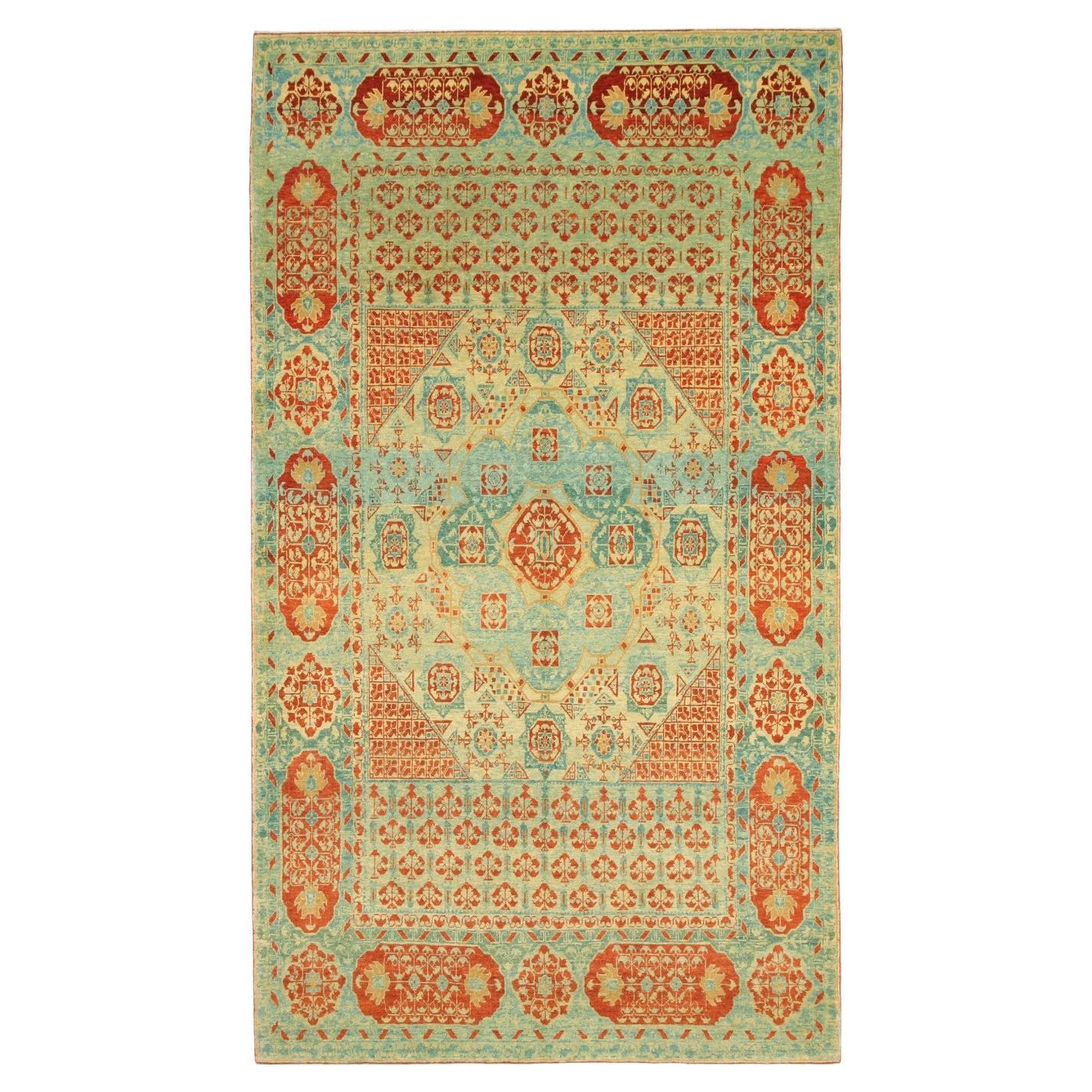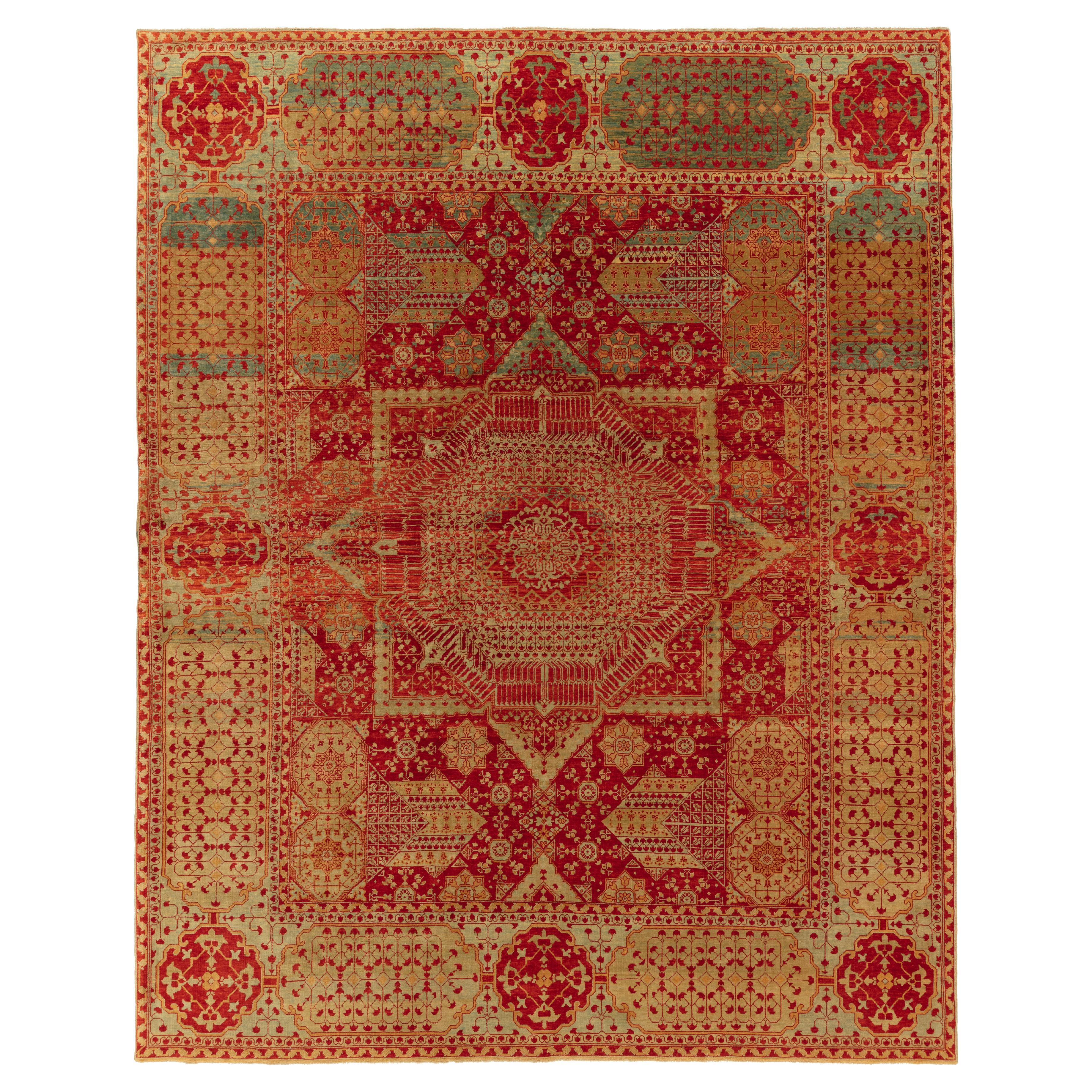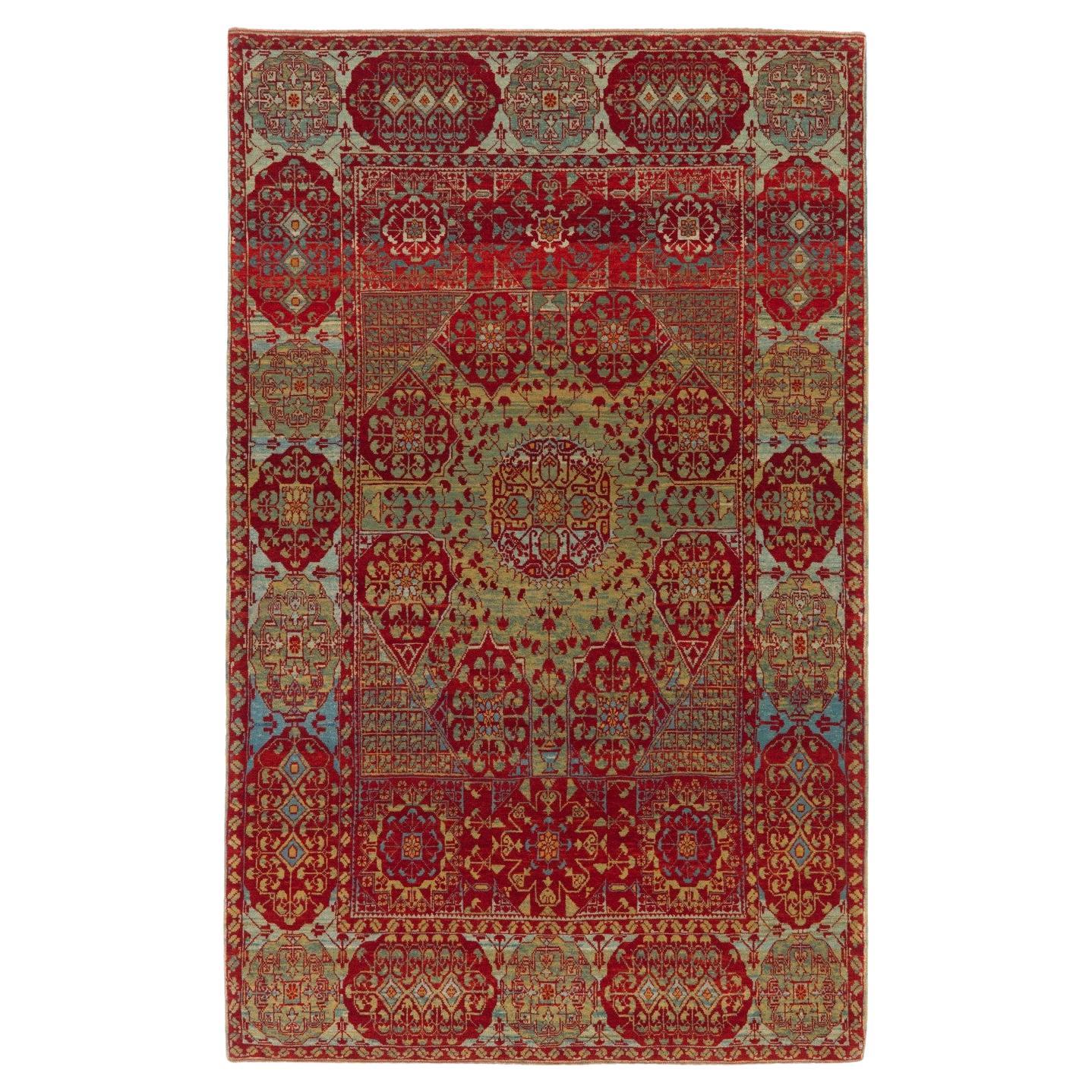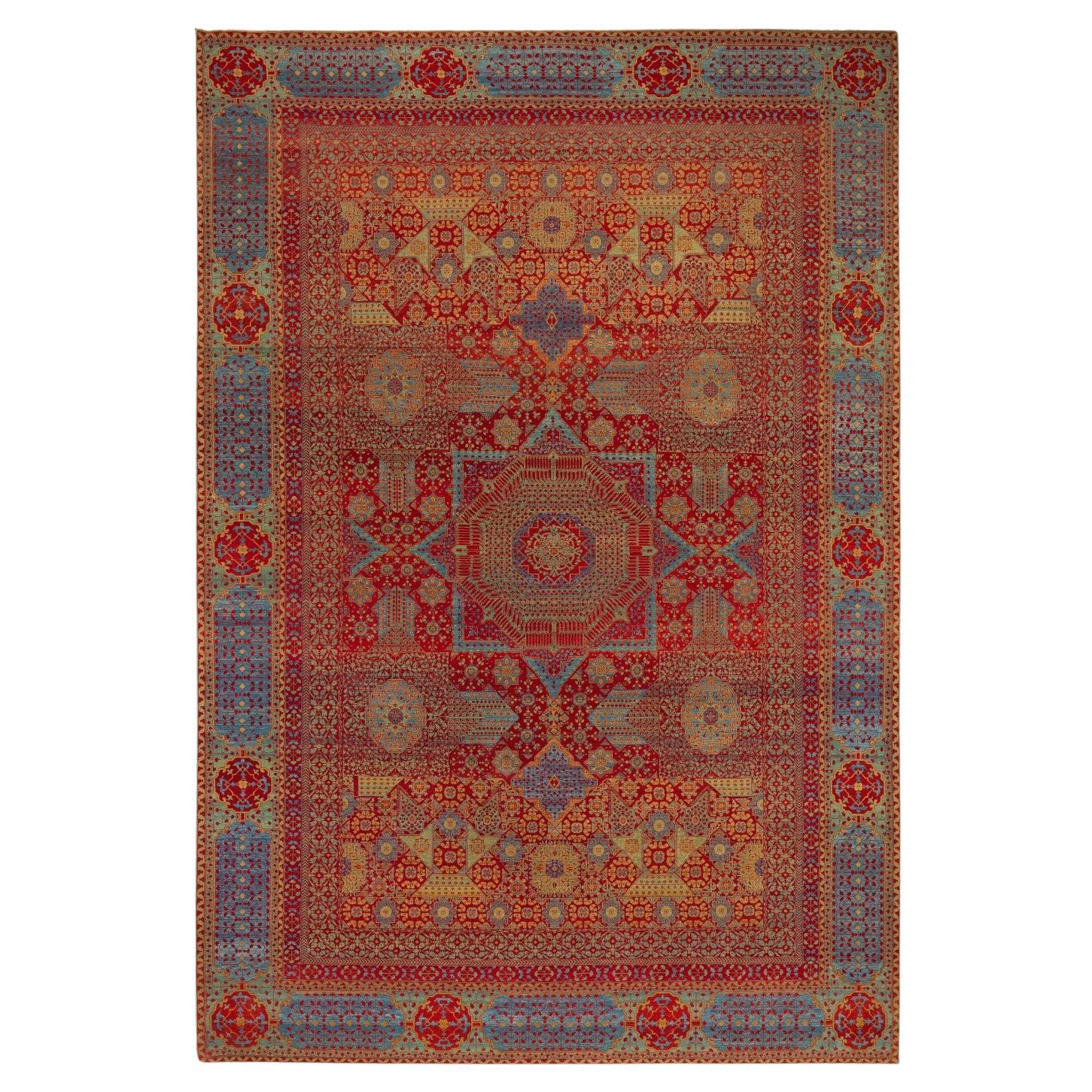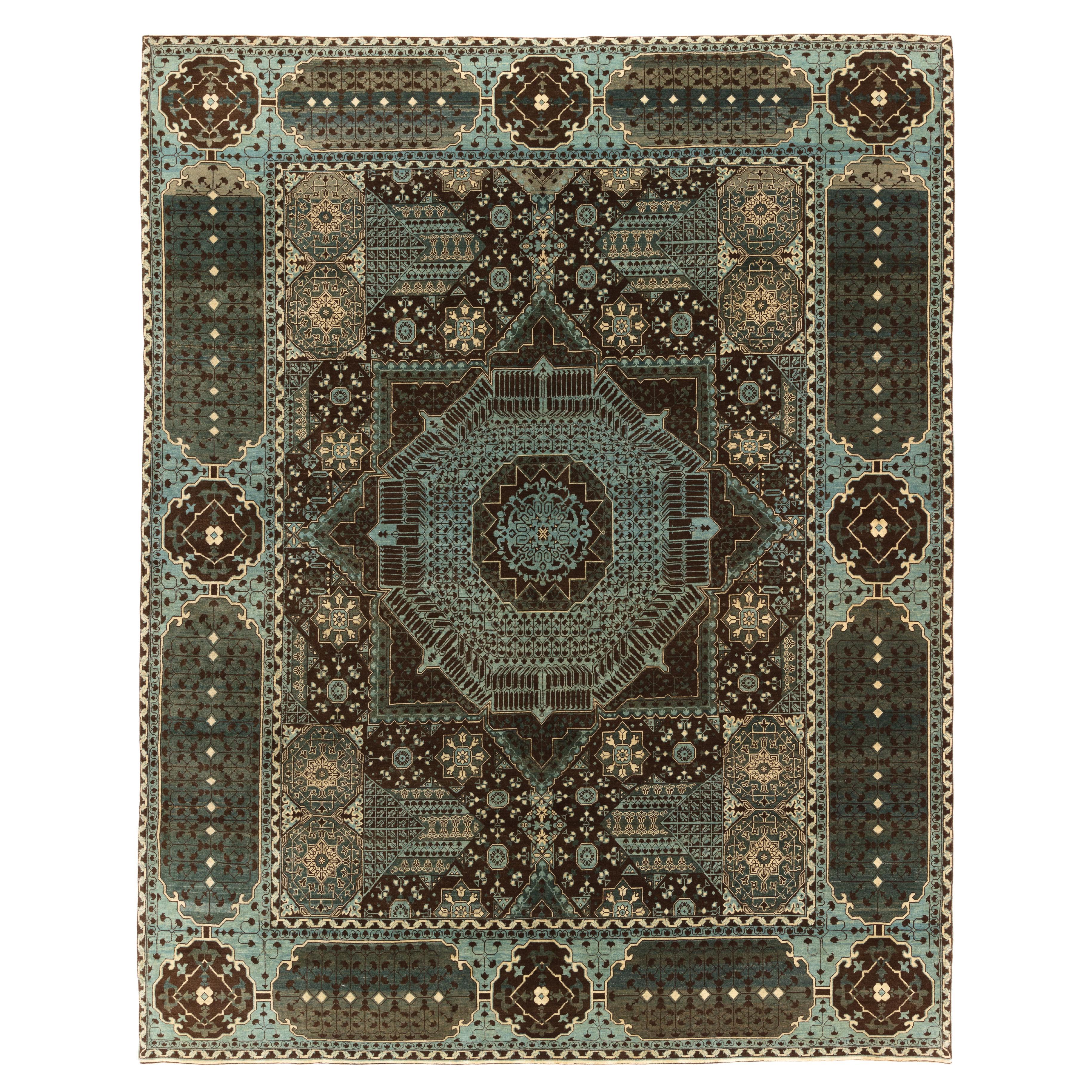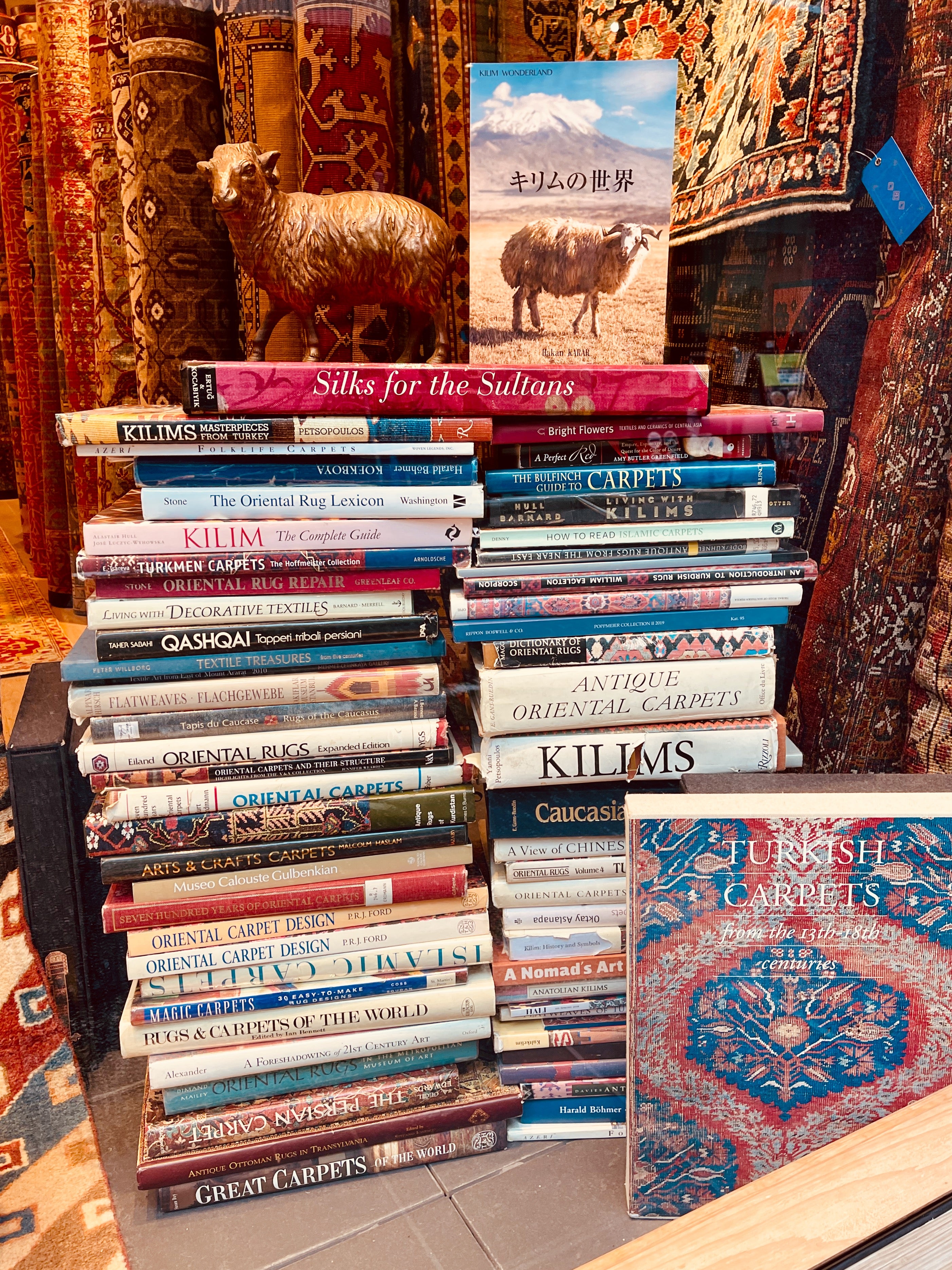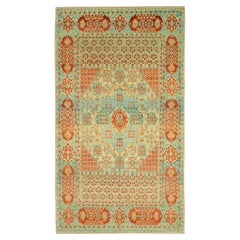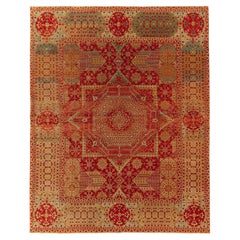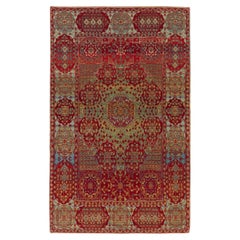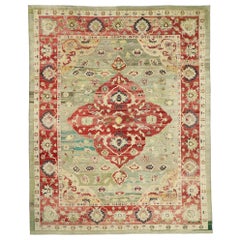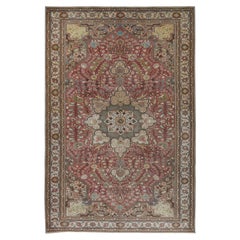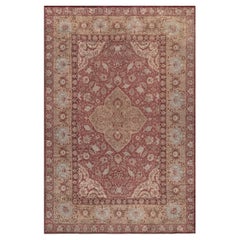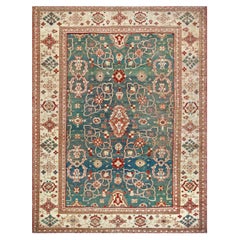Items Similar to Ararat Rugs The Simonetti Mamluk Carpet 16th C. Revival Rug, Square Natural Dyed
Want more images or videos?
Request additional images or videos from the seller
1 of 8
Ararat Rugs The Simonetti Mamluk Carpet 16th C. Revival Rug, Square Natural Dyed
$9,800
£7,362.03
€8,489.62
CA$13,598.78
A$15,111.24
CHF 7,918.45
MX$185,312.46
NOK 100,995.24
SEK 95,012.61
DKK 63,362.93
Shipping
Retrieving quote...The 1stDibs Promise:
Authenticity Guarantee,
Money-Back Guarantee,
24-Hour Cancellation
About the Item
The source of carpet comes from the book How to Read - Islamic Carpets, Walter B. Denny, The Metropolitan Museum of Art, New York 2014 fig.61,62. The five-star-medallion carpet was designed in the early 16th century by Mamluk Sultane of Cairo, Egypt. It is exhibited at The Metropolitan Museum of Art, New York as The 'Simonetti' Carpet. The conventional practice of naming Islamic carpets either after the place they were found ("Niğde Carpet") or after a previous owner ("Anhalt Carpet") in this case memorializes the former Italian owner of this magnificent example of fifteenth-century Cairene weaving under the Burji Mamluk dynasty (1382–1517). The Simonetti Carpet is commonly called a "five-color Mamluk carpet" because of its color palette. The materials (most notably S-spun, or clockwise-spun, wool), dyestuffs (a limited range of colors including a purple-red made from the lac insect), and distinctive repertoire of geometric designs are all characteristic of Mamluk carpets from the period. The width, about ninety-four inches (239 cm), is typical for contemporaneous carpets woven in Cairo. A roller-bar loom was used to make the carpet: the unwoven warps were unwound from a rotating cylindrical wood roller at the top of the loom, and the finished carpet was then wound up around a similar roller at the bottom. This method allowed the same loom to be employed to weave both very long and relatively short carpets of the same width. The Simonetti displays three of the geometric medallion designs usually seen in short Mamluk carpets (two of them repeated, combined in A-B-C-B-A sequence) in one very long, impressive work of art. Mamluk carpets originated in a physical environment that lacked the combination of abundant marginal grazing land and a temperate climate with cool winters that were common to most carpet-weaving areas in the Islamic world. While related to a broader tradition of Turkish weaving centered in Anatolia, far to the north, the designs of these carpets include atypical elements, such as stylized papyrus plants, that are deeply rooted in Egyptian tradition. Their unusual composition and layout probably represent an attempt to develop a distinctive product that could in effect establish a "Mamluk brand" in the lucrative European export market. The uncharacteristic color scheme—devoid of the undyed white pile and employing a limited range of three or five hues in much the same value—also suggests a conscious attempt to create a particular stylistic identity. Also virtually unique in the world of Islamic carpets is the S-spun wool. It has been argued that the tradition of clockwise wool spinning originated in Egypt because of the earlier Egyptian tradition of spinning flax into linen thread. Details of the plant’s botanical structure make it impossible to spin flax fiber in the more common counterclockwise direction utilized throughout the Middle East for wool and cotton. Mamluk carpets with the color combinations seen in the Simonetti are now generally accepted as part of an earlier tradition that has many links to the weaving of Anatolia, Iran, and Syria. The "three-color" Mamluk carpets, well represented in the Metropolitan’s collection, represent a later development that continued well after the Ottoman conquest of Egypt in 1517. Many such carpets may have been produced well into the seventeenth century, and possibly even later. (Walter B. Denny in [Ekhtiar, Soucek, Canby, and Haidar 2011]). The design of the rug is interpreted by our designers with one central star, and soft colors are used for this rug.
Color summary: 6colors in total;
Imperial Red 415 (Madder Root)
Russian Green 418 (Henna - Indigo)
Sunray Color 405 (Henna)
Cadet Blue 26 (Spurge - Indigo)
Cocoa Brown 109 (Sheep's Own Color)
Natural Wool Color 320 (Specially Washed)
Group: Islamic Rugs Family
Area: Mamluk
Material of Pile: Natural Dyed Hand-spun Wool
Material Warp / Weft: Wool on Wool
Structure: Symmetrical knot on depressed warp inclining to the right
Knots Density: 39x39
Production Place: Southeastern Anatolia – Diyarbakir Province
Pattern Code: MK 1039 185X240 AR0139
Weight: 13.00kg
Location: Tokyo
Dimensions:
7 ft 8 in x 6 ft 3 in ( 234cm x 192cm )
- Creator:Ararat Rugs (Manufacturer)
- Dimensions:Width: 75.6 in (192 cm)Length: 92.13 in (234 cm)
- Style:Revival (In the Style Of)
- Materials and Techniques:
- Place of Origin:
- Period:
- Date of Manufacture:2023
- Production Type:New & Custom(One of a Kind)
- Estimated Production Time:Available Now
- Condition:
- Seller Location:Tokyo, JP
- Reference Number:Seller: 7001stDibs: LU8206238891392
ARARAT RUGS
We know and believe that the geography we come from, our past, and our lifestyle are the most important bond between us to carry the oriental carpet art and culture to the next generations along with our core values in our ongoing growth journey.
We are aware that the way to achieve this goal and carry this priceless art and culture to the future depends on a lot of work with all our people every day while adhering to our core values.
For us, art is meaningful in the sense that it brings together various cultures around the world. It is an honor for us that oriental carpet art and culture have been instrumental in this for centuries and that we are a part of this business.
We are tirelessly keeping an eye on auction house information around the world about carpets. New York's Metropolitan, London's Victoria & Albert Museums, and other famous art museums, as well as small specialized museums that house private collections, and books about oriental carpets to collect information on outstanding carpet designs and patterns from around the world. It's our Self-improving and Self-developing culture.
As Turkish Culture of Hospitality, the Kurdish Culture of Generosity, and as Japanese Culture of Business Punctuality; are the most important values that this multicultural background has taught and bequeathed to us. It is essential and valuable for us that you feel this feeling not only by looking at our oriental carpets but from the moment you contact us.
About the Seller
5.0
Platinum Seller
Premium sellers with a 4.7+ rating and 24-hour response times
Established in 1970
1stDibs seller since 2023
54 sales on 1stDibs
Typical response time: 3 hours
- ShippingRetrieving quote...Shipping from: Tokyo, Japan
- Return Policy
Authenticity Guarantee
In the unlikely event there’s an issue with an item’s authenticity, contact us within 1 year for a full refund. DetailsMoney-Back Guarantee
If your item is not as described, is damaged in transit, or does not arrive, contact us within 7 days for a full refund. Details24-Hour Cancellation
You have a 24-hour grace period in which to reconsider your purchase, with no questions asked.Vetted Professional Sellers
Our world-class sellers must adhere to strict standards for service and quality, maintaining the integrity of our listings.Price-Match Guarantee
If you find that a seller listed the same item for a lower price elsewhere, we’ll match it.Trusted Global Delivery
Our best-in-class carrier network provides specialized shipping options worldwide, including custom delivery.More From This Seller
View AllArarat Rugs the Simonetti Mamluk Carpet 16th Century Revival Rug, Natural Dyed
By Ararat Rugs
Located in Tokyo, JP
The source of carpet comes from the book How to Read – Islamic Carpets, Walter B. Denny, The Metropolitan Museum of Art, New York 2014 fig.61,62. The five-star-medallion carpet was d...
Category
21st Century and Contemporary Turkish Revival Turkish Rugs
Materials
Wool, Natural Fiber, Organic Material
Ararat Rugs The Simonetti Mamluk Carpet 16th C. Revival Rug, Square Natural Dyed
By Ararat Rugs
Located in Tokyo, JP
The source of carpet comes from the book How to Read - Islamic Carpets, Walter B. Denny, The Metropolitan Museum of Art, New York 2014 fig.61,62. The five-star-medallion carpet was d...
Category
21st Century and Contemporary Turkish Revival Turkish Rugs
Materials
Wool, Natural Fiber, Organic Material
Ararat Rugs the Simonetti Mamluk Carpet 16th Century Revival Rug, Natural Dyed
By Ararat Rugs
Located in Tokyo, JP
The source of carpet comes from the book How to Read – Islamic Carpets, Walter B. Denny, The Metropolitan Museum of Art, New York 2014 fig.61,62. The five-star-medallion carpet was d...
Category
21st Century and Contemporary Turkish Revival Turkish Rugs
Materials
Wool, Natural Fiber, Organic Material
Ararat Rugs Mamluk Carpet with Cup Motif, Antique Revival Rug, Natural Dyed
By Ararat Rugs
Located in Tokyo, JP
The source of the rug comes from the book Renaissance of Islam, Art of the Mamluks, Esin Atil, Smithsonian Institution Press, Washington D.C., 1981 nr.125. This a rug with a cup moti...
Category
21st Century and Contemporary Turkish Revival Turkish Rugs
Materials
Wool, Natural Fiber, Organic Material
Ararat Rugs Oversized Mamlouk Rug A Majestic Revival of Islamic Artistry Carpet
By Ararat Rugs
Located in Tokyo, JP
Origin and Inspiration:
The Mamlouk Rug is a contemporary masterpiece that draws its inspiration from the rich textile traditions of the Mamlouk Sultanate, which reigned over Egypt a...
Category
21st Century and Contemporary Turkish Revival Turkish Rugs
Materials
Wool, Natural Fiber, Organic Material
Ararat Rugs the Simonetti Mamluk Carpet 16th Century Revival Rug, Natural Dyed
By Ararat Rugs
Located in Tokyo, JP
The source of carpet comes from the book how to Rread – Islamic Carpets, Walter B. Denny, The Metropolitan Museum of Art, New York 2014 fig.61,62. The five-star-medallion carpet was ...
Category
21st Century and Contemporary Turkish Revival Turkish Rugs
Materials
Wool, Natural Fiber, Organic Material
You May Also Like
New Contemporary Turkish Oushak Rug Repurposed from Antique Wool
Located in Dallas, TX
52508 New Modern Turkish Oushak Rug, 11'11 x 15'00. Behold this enchanting hand-knotted wool contemporary Turkish Oushak rug, where timeless tradition meets modern elegance. Its grand design features a majestic four-point medallion, gracefully adorned with finials at either end. The geometric pattern unfolds in a symphony of Harshang-style motifs and blooming palmettes, creating an organic dance upon an abrashed field. Each element harmonizes beautifully, telling a story of artistry and craftsmanship that transcends time.
Encircling this magnificent medallion is a border rich in heritage, a variation of the Herati and palmette designs, further embellished with subsidiary guard borders. These intricate frames add depth and dimension, guiding the eye along paths of history and beauty. The careful composition ensures that every glance reveals a new detail, a hidden treasure waiting to be discovered. The colors, vivid and subtle, blend seamlessly, invoking a sense of tranquility and grandeur.
What makes this contemporary Turkish Oushak rug even more captivating is its journey of transformation. Crafted from the wool of an antique Kilim, over a century old, the process begins with the careful unraveling of its fibers. This precious wool, steeped in history, is then lovingly re-woven into a new masterpiece, breathing new life into an age-old tradition. The result is a rug that not only adorns your space but also carries the whispers of generations past, making it a truly unique and enchanting addition to any home.
Rendered in variegated shades of sage, moss, fern, olive, dark green, red, ruby red, crimson, beige, sand, tan, buff, ecru, taupe, coral, peach, eggplant, charcoal, coffee, brown, saffron, teal, and cerulean with colorful striations.
Complementary Sherwin Williams Colors and Hues: Garden Sage, Verde Marron, Red Bay, Sawgrass Basket, Weathered Shingle, Raging Sea, Hinoki, Believable Buff, Fenland, Foxy, Sturdy Brown, Heartthrob, Ravishing Coral, Thunderous, Netsuke, Roycroft Brass, Ruskin Room Green, Roycroft Copper...
Category
21st Century and Contemporary Turkish Medieval Turkish Rugs
Materials
Wool
$14,516 Sale Price
27% Off
6.3x9.7 Ft Vintage Turkish Kysari Rug. Fine, Timeless Classic Oriental Carpet
Located in Spring Valley, NY
Add a touch of timeless elegance to your home with this traditional vintage hand knotted Turkish area rug, crafted from 100% premium wool. This exquisite piece captures the essence o...
Category
Vintage 1960s Turkish Rustic Turkish Rugs
Materials
Wool
$2,360 Sale Price
20% Off
Free Shipping
Late 19th Century Turkish Oushak Rug from West Anatolia
Located in West Hollywood, CA
This traditional handwoven Turkish Oushak rug has a coral field with scrolling vines issuing palmettes and floral motif, with a central golden medallion enclosing similar scrolling v...
Category
Antique Late 19th Century Turkish Oushak Turkish Rugs
Materials
Angora
Late 19th Century Hand-Woven Wool Persian Sultanabad Rug
Located in West Hollywood, CA
The shaded malachite field with a central column of brick-red and burnt-orange palmettes surrounded by ivory open floral cartouches, stylized linked vase motifs and minor further flo...
Category
Antique Late 19th Century Persian Sultanabad Persian Rugs
Materials
Wool
Natural Dye Oushak Revival Rug from Mehraban
By Mehraban Rugs
Located in WEST HOLLYWOOD, CA
This mesmerizing Oushak design from our collection is the definition of perfection, elegance, and refinement. It features dazzling details in gold red. Breath-taking symmetric leafy ...
Category
21st Century and Contemporary Afghan Oushak Central Asian Rugs
Materials
Wool
Oushak Rug Oriental Hand Knotted Turkish Antique Look Oushak 9'1" x 11'6" #5427
Located in Houston, TX
Oushak Rug Oriental Hand Knotted Turkish Antique Look Oushak 9'1" x 11'6" #5427
Explore a curated collection of hallway runners, wool rugs, and handmade masterpieces, where elegance...
Category
21st Century and Contemporary Turkish Turkish Rugs
Materials
Wool
$4,740 Sale Price
65% Off
More Ways To Browse
Unusual Ottoman
Spin Display
Wood Wool Sheep
Iran Book
Pair Of Antique Prints
Seating With Fringe
Victorian Oil Paintings
Vintage Coffee Shop Furniture
White Wood Wall Panels
6 Leg Table Chippendale
Antique Buttons
Antique Colonial Table
Antique Glass Knife
Antique Russian Glass
Antique Silver Sheffield Silver Hallmarks
Chinese Antique Signed Painting
Chinoiserie Blue White
Classic Modern Bench
